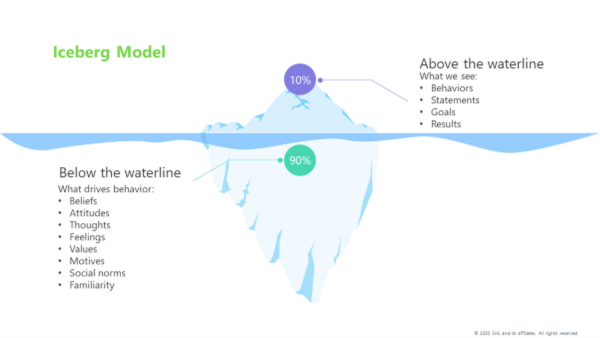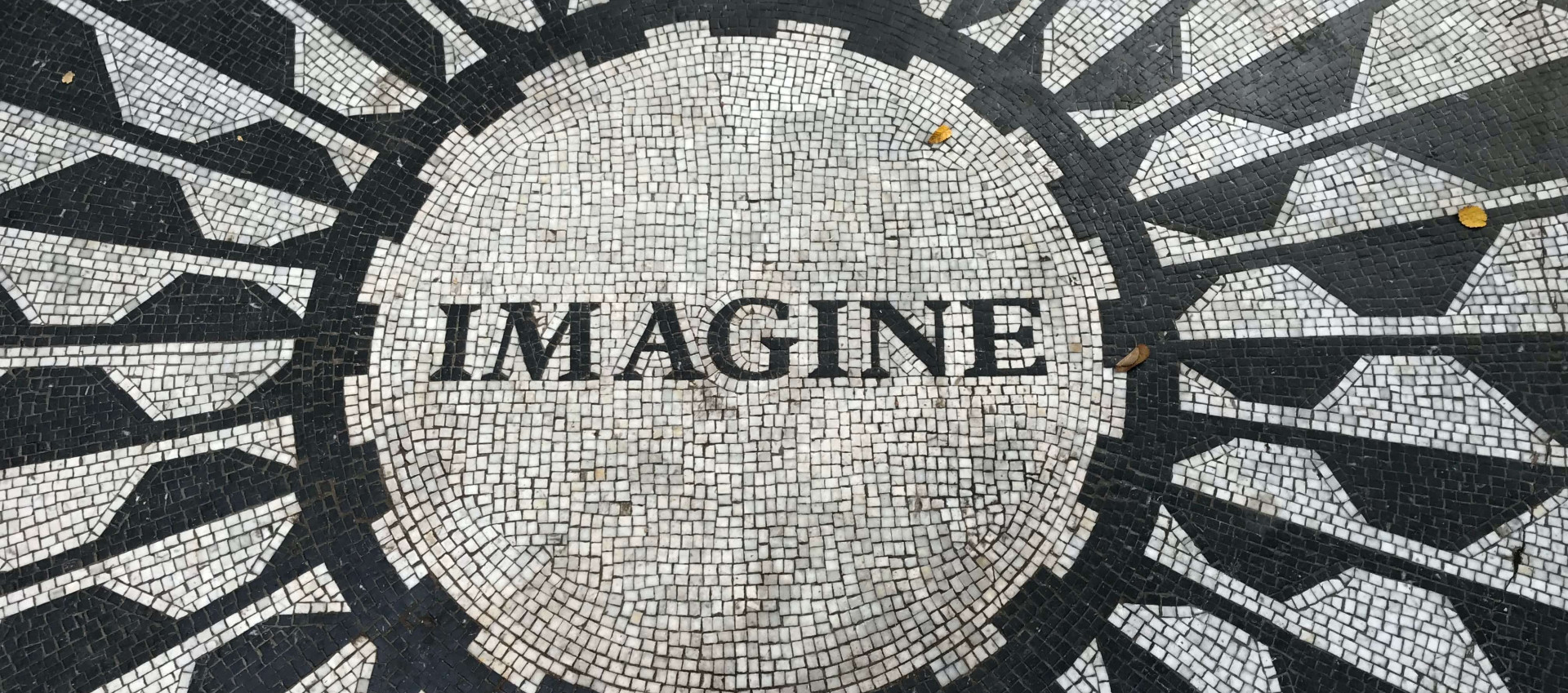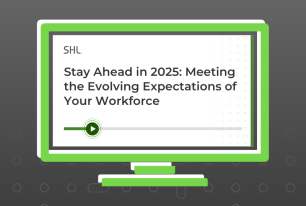3 Strategies for a Wholistic Approach to Your DEI Efforts
Why DEI efforts fail and how organizations can align people, processes, and technology to make meaningful and sustainable change.
Share
Why Diversity and Inclusion Fails
George Floyd’s murder in the spring of 2020 ignited an already passionate social justice movement across the United States, and with it has come a new vigor for businesses and workplace researchers to meaningfully embrace diverse workforces and cultures. While organizations have been focused on diversity, equity, and inclusion (DEI) efforts for decades, research shows that most DEI efforts fail to make sustained organizational impact and change. But why?
The reality is that organizations are filled with people, and all people have biases. We tend to naturally gravitate to those we have more in common with (affinity bias), seek information that confirms what we already believe (confirmation bias), and fall prey to several other biases each day. At organizational scale, human biases create vicious cycles of systematic inequity.
Consider this: You would likely describe yourself or the managers in your organization as good leaders. They work hard, genuinely care about their people, and help others grow. However, bias subconsciously slips into our daily decisions, and all of us, including good managers — those who have a good judge of character — run the risk of selecting and providing more development opportunities to those that we can “see ourselves in” or “fit into our culture”.
This bias in selection and development compounds: stunted diversity from day one leads to even fewer diverse individuals gaining the experience required to make them “ready now” for a promotion. This funneling effect makes it impossible for organizations to make real progress with their DEI initiatives.
This begs the question: as we embark in earnest to build cultures that create equitable opportunity for all people regardless of race, gender, religion, nationality, disability, sexuality, age, and class, what can we do to make real change? Success requires a holistic approach that includes people, processes, and technology.
Success requires a holistic approach that includes people, processes, and technology.
Defining Diversity, Equity, and Inclusion
In this blog series, we will explore these three levers to help your organization authentically and effectively embrace DEI efforts. This will include conversations about why each of these areas matter and practical strategies for action.
Before we jump in, however, I want to lay out some definitions to help us understand exactly what we mean when we say diversity, equity, and inclusion:
- Diversity: The characteristics of people that make them unique. DEI initiatives seek to create workplaces that reflect the diversity of the population they serve.
- Equity: Equity is about being fair and just. The difference between equity and equality is that equality focuses on giving everyone the same resources or opportunities, and equity focuses on giving everyone the resources and opportunities they need to reach the same outcome. Imagine two people picking apples from a tree planted on a hill. If you give both people the same height ladder, the one standing uphill will be able to reach the apples, but the one standing downhill won’t. This is equality: both people received the same ladder. Equity gives the person standing downhill a taller ladder, allowing both people the resources and opportunities they need to reach the apples.
- Inclusion: Creating a workplace where people feel integrated and heard in all organizational policies and practices. Having inclusion is what makes people feel like they work in an organization that cares about, listens to, and considers all people. This is the end goal of DEI work, and it is the hardest part to achieve and sustain.
You will note from the definitions above that it is possible to have a diverse workforce where people do not feel heard and appreciated. So, diversity is only the start. Now, let’s consider the most important lever for making any change in your organization: your people.
How to Have a Successful DEI Program
DEI does not just involve sourcing, hiring, and promoting a workforce that represents the population it serves. It also means building awareness for your entire workforce about the underlying and often subconscious beliefs, attitudes, and feelings that drive behavior.
Many use the Iceberg Model to discuss this challenge. In this model, you can see that only 10% of the iceberg sits over the water, and this represents what we can see: what people say and do, results, etc. But the other 90% of the iceberg sits under the water, representing internal and often subconscious factors that drive human behavior.

Organizations often try to make change amongst their people using diversity training. However, this training is often wrapped up in annual mandatory training or focused on handling grievances after they are raised. This type of training reactively addresses issues rather than proactively tackle the vicious cycle of systematic bias described above.
Real change requires a deeper, cultural shift. Successful diversity programming must be approached strategically, but then must be rolled out in a voluntary way by asking teams to opt-in. As professors, Frank Dobbin and Alexandra Kalev put it in their HBR article Why Diversity Programs Fail, for DEI efforts to succeed, they must “engage managers in solving the problem, expose them to people from different groups, and encourage social accountability for change.”
This method increases ownership for those participating (they chose to participate, so they feel responsible), which ultimately increases the likelihood that participants will engage in critical thinking about their underlying beliefs and behaviors that may be inconsistent with what they believe to be true about themselves. These voluntary participants then become diversity champions for the organization and can be leveraged alongside leadership and HR as business partners to help make messages and strategies sink in and stick.
To change the culture, you have to change the conversation.
DEI strategies can’t just tell people what to do differently, they must focus on the under the water cultural drivers of behavior. This means training should focus on:
- Raising awareness and building knowledge about bias
- Creating a desire for people to opt into change through storytelling and casting a vision of the benefits of a more inclusive workforce
- Training people to recognize their biases and providing them with tactics to change their behavior
- Setting clear expectations about what is and is not tolerated
- Repeating the same messages and expectations by weaving them into the fabric of the organization (HR processes, strategic goals, metrics, competencies, cultural beliefs, corporate values, mission statements, etc.)
- Reinforcement through creating a safe space to hold people accountable, creating a psychologically safe environment to have challenging conversations, and calling others out when they do not deliver
Especially if you work for a large, complex, matrixed, or geographically diverse organization, only when you feel you have exhausted the point is the message just sinking in throughout the organization. Keep chugging forward.
It also must be emphasized that the key to the success of every DEI strategy is leadership involvement. C-suite leaders must walk the walk by holding themselves and others accountable to objectives, weave DEI into organizational level business goals, and lean into diversity as a strategy when times get tough rather than back away until they have the time and space for this work (hint: that time will never come).
With this groundwork laid about how organizations can engage their workforce to champion DEI efforts, part II of this series will focus on the processes and structures required to sustain organizational change.
In the meantime, keep your learning going by listening to this podcast about becoming a truly diverse and inclusive organization.









